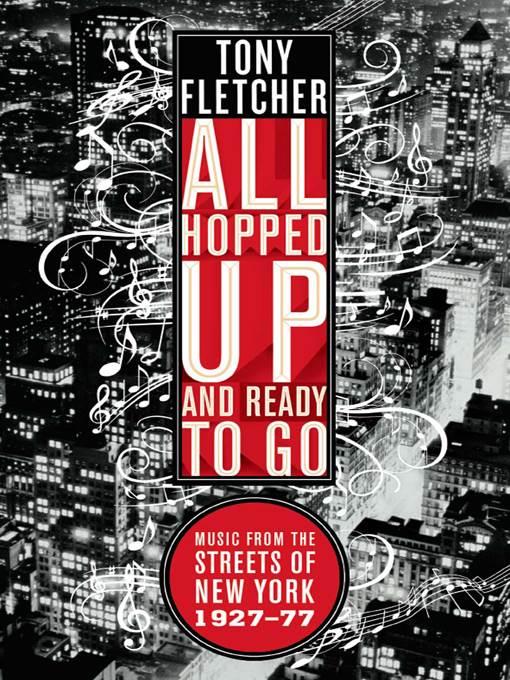
All Hopped Up and Ready to Go
Music from the Streets of New York 1927-77
- اطلاعات
- نقد و بررسی
- دیدگاه کاربران
نقد و بررسی

July 27, 2009
From the Brill Building to CBGB, from Washington Square Park to the Apollo Theater, New York has been the birthplace and center of an astonishing variety of musical trends. In his richly detailed study of 50 years of the city's most important music history, music journalist Fletcher vividly recreates the birth and evolution of jazz, folk, pop, punk and hip-hop as the strains of these musical styles emerged from the urban cacophony of New York. Drawing on interviews and archives of well-known stories, Fletcher nimbly explores the ways that various musical styles benefit from and grow out of their contact with their surrounding cultures. For example, the music scene of the Lower East Side was a direct product of the area's thriving movements in poetry, filmmaking, avant-garde music and experimental theater. Fletcher chronicles the beginnings of the folk movement in the sing-alongs in Washington Square Park and the opening of the Folklore Center on MacDougal Street in 1957, where musicians could hold hootenannies. Fletcher observes the folk scene on the wane as John Sebastian leaves Jim Kweskin's Jug Band and teams with Canadian Zal Yanovsky, formerly of the Mugwumps (which became the Mamas and the Papas), to form the rock band the Lovin' Spoonful, and provides one of the best brief histories of CBGB. Fletcher's terrific music history captures the teeming life of New York's thriving music scene.

August 15, 2009
Exhaustive historiography of New York City's role in shaping 20th-century American popular music.
Music journalist Fletcher (The Clash: The Complete Guide to Their Music, 2005, etc.) offers a reasonably substantive 50-year survey of New York's lasting contributions, encapsulating everything from Afro-Cuban jazz, to the early 1960s Washington Square grassroots folk-music scene, to the oddly intertwined arenas of punk rock, disco and hip-hop. The author, a British expat and longtime New Yorker, exudes a sentimental Ken Burnsian reverence for not only New York's contributions to music history but also for its social and cultural history. Using previously picked-over musical subjects, Fletcher ably recycles and reorganizes this information in a well-engineered synthesis. Don't expect many theoretical conclusions, however. The author is more effective at reconstructing the note-by-note rise of musical movements and the often chaotic NYC neighborhoods that spawned them. There's plenty of relevant but overcirculated oral history on the Harlem Renaissance, the Dizzy Gillespie/Charlie Parker bebop era, the early-'60s girl-group/Brill Building years, the Bob Dylan/Woody Guthrie folk connection and the original CBGB scene. Fletcher does fill in a few crucial historical blanks, especially regarding the development of the early-'70s Manhattan dance-club scene. He gives an intimate portrait of some all-but-forgotten impresarios whose late-'60s/early-'70s dance-oriented loft parties later exploded into Studio 54 disco-era excess and exclusivity. Fletcher also digs into Manhattan's undervalued pre-disco gay dance-club scene, which effectively initiated the DJ and turntable artistry that would influence the Bronx-bred musical revolution known as hip-hop.
Often short on revelation and analysis, but an informative historical record of NYC's half-century of unparalleled musical achievements.
(COPYRIGHT (2009) KIRKUS REVIEWS/NIELSEN BUSINESS MEDIA, INC. ALL RIGHTS RESERVED.)

September 1, 2009
Fletcher ("Moon: The Life and Death of a Rock Legend"), who has worked in the music industry as a producer, consultant, and DJ, here examines styles that were developed and evolved on the streets of New York City from 1927 to 1977, covering jazz, blues, Brill Building pop, doo-wop, folk, punk rock, hip-hop, and disco. Fletcher provides compelling and convincing evidence on why New York and its unique cultural mix were essential to all of these scenes. He studies in detail how music that developed on the streets became important commercial genres and examines the intersections of all the styles over the 50-year period he discusses. VERDICT This thoroughly researched, engaging, and perceptive book is aimed at all readers and doesn't duplicate anything that's already out there. Anyone with any interest in popular music in New York City will want to read it.James E. Perone, Mount Union Coll., Alliance, OH
Copyright 2009 Library Journal, LLC Used with permission.

Starred review from September 15, 2009
A lot happened in the musical life of New York City during the 50 years Fletcher chronicles. He chose the particular dates 1927 and 1977 because he considers them major musical peaks framing a period of explosion in popular music unlike any other. The Jazz Age was in full flower in 1927, while 1977 was the cusp of the disco and hip-hop eras and a pivotal year in NYC history, what with a skyrocketing crime rate and a major blackout. The genres Fletcher examines include Afro-Cuban jazz, Cuban pop, commercial folk music, harmony-group singing, punk, nascent disco, and early hip-hop, and discussed at length are Charlie Parker and Dizzy Gillespie, Woody Guthrie and Pete Seeger, Tito Puente and the Brill Building sound, Bob Dylan and Rascals lead singer Felix Cavaliere, Lou Reed and Talking Heads, the New York Dolls and Patti Smith, the Ramones and Blondie. Throughout, Fletchers commentary melds very different cultures to show interrelationships and how new genres built upon the foundations of predecessors. This makes for an ambitious agenda whose demands Fletcher meets magnificently. Anyone interested in popular music and the rich cultural heritage of New Yorkindeed, of all of the U.S.should read this book.(Reprinted with permission of Booklist, copyright 2009, American Library Association.)




دیدگاه کاربران